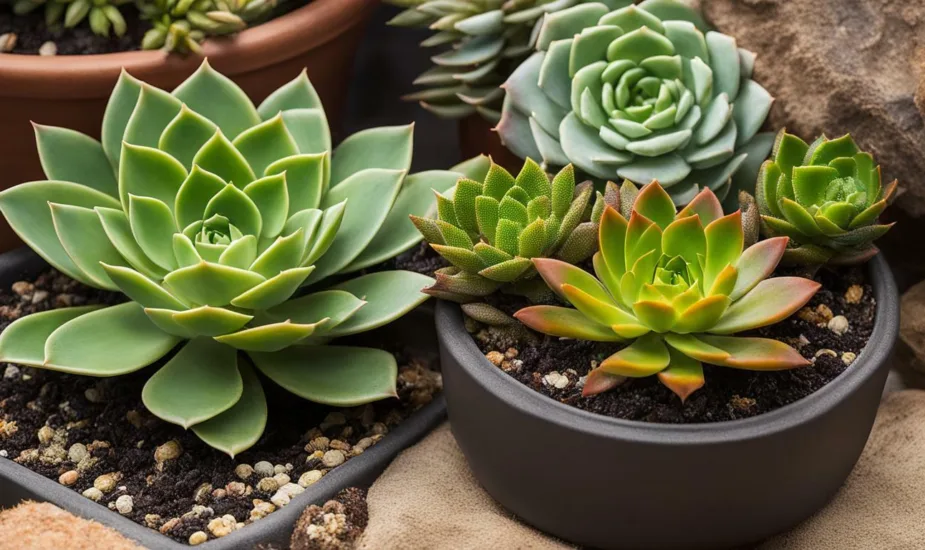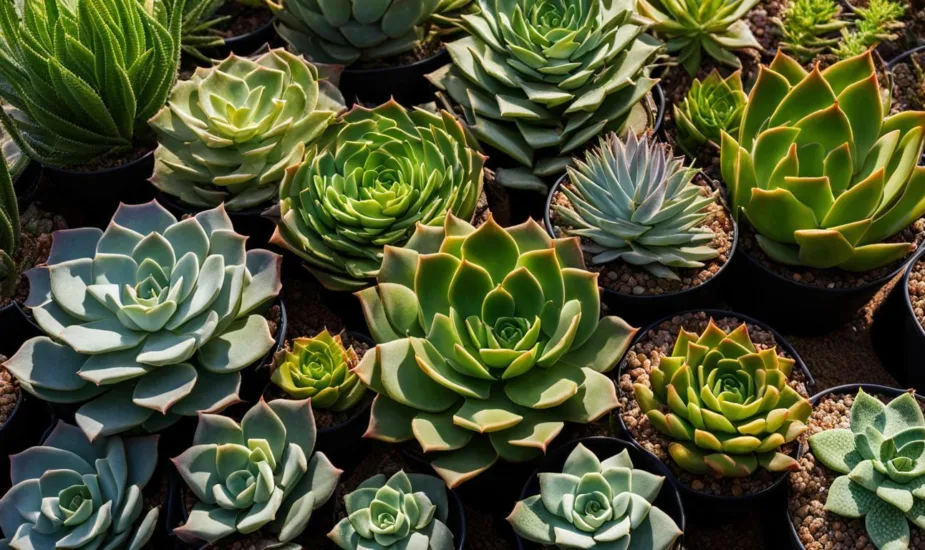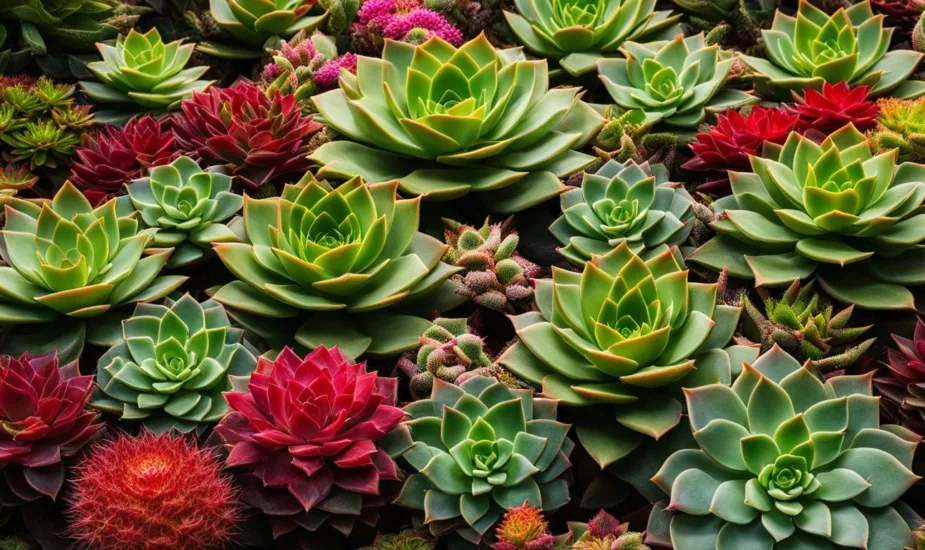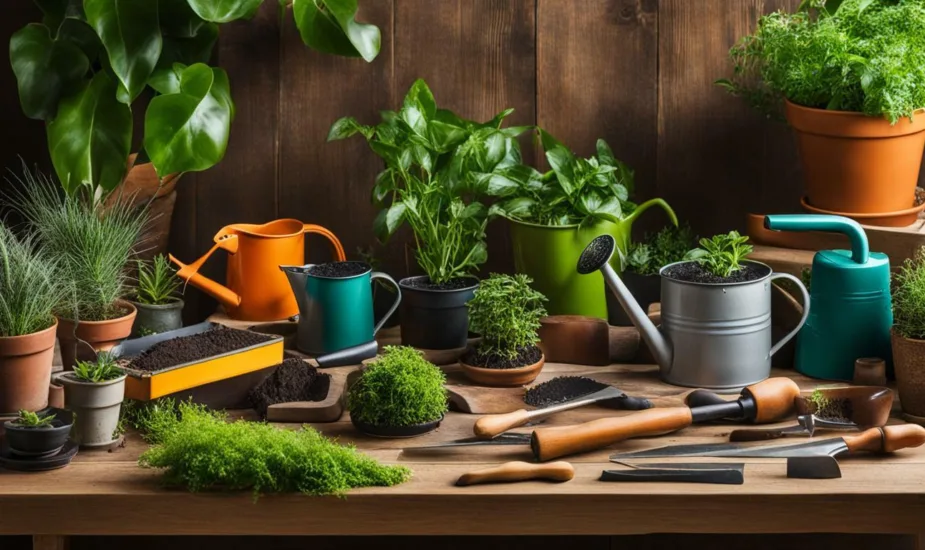How-To Planting Tulips in Pots Over Winter: A Full Guide
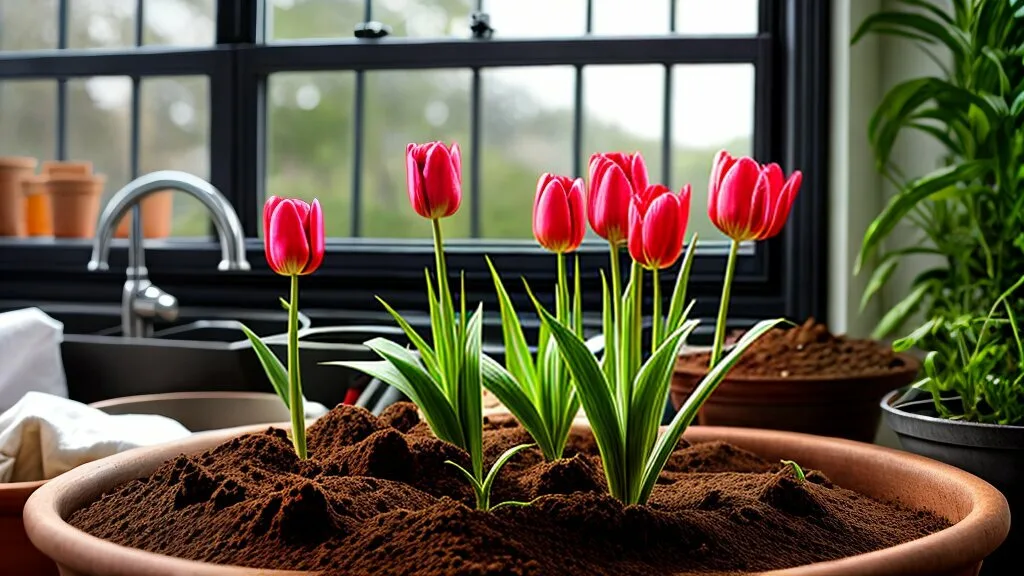
As a professional gardener, I’m always on the lookout for creative ways to bring color and life to outdoor spaces, especially during the winter months. One of my favorite techniques is planting tulips in pots over winter. It may seem surprising, but with just a few simple steps, you can enjoy the beauty of tulips even in cold weather. In this guide, I’ll take you through everything you need to know to successfully plant tulips in pots over winter, from selecting bulbs to caring for them throughout the season.
Key Takeaways:
- Planting tulips in pots over winter is a great way to brighten up outdoor spaces during the colder months.
- Choosing the right pots and soil is crucial for successful tulip container gardening in winter.
- Selecting the appropriate tulip bulbs and varieties will help ensure a gorgeous display come springtime.
- Proper planting techniques, winter care, and protection from frost and cold are all key to overwintering tulips in pots.
- By following these steps, you can prepare your potted tulips for spring and enjoy their beautiful blooms.
Choosing the Right Pots and Soil
When it comes to planting tulips in pots over winter, selecting the right containers and soil is crucial to success. Here are some tips to help you get started:
Choosing the Right Pots
When selecting pots for planting tulips, it’s important to choose a size that will accommodate the bulbs and allow them to grow. A depth of at least 8 inches is recommended to ensure proper root development. Additionally, pots should have adequate drainage holes to prevent waterlogging and root rot.
Consider the aesthetic appeal of your pots as well. Tulips come in a range of colors, so selecting pots that complement or contrast with their blooms can add to the overall appeal of your display.
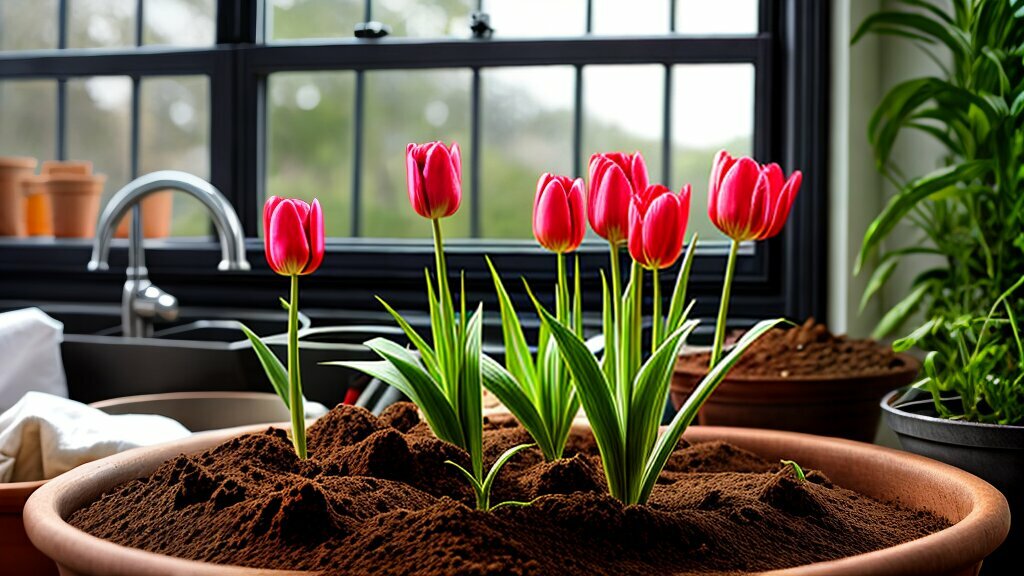
Choosing the Right Soil
The right soil composition is crucial for growing healthy tulips in pots over winter. Choose a well-draining potting mix that is specifically formulated for bulbs or add perlite or sand to ordinary potting soil to improve drainage.
In addition, consider adding a slow-release fertilizer to provide your bulbs with the nutrients they need to thrive throughout winter.
By choosing the right pots and soil for planting tulips, you can give your bulbs the best chance at healthy growth and vibrant blooms come spring.
Selecting Tulip Bulbs and Varieties
Before planting tulips in pots over winter, it’s essential to select the right bulbs and varieties. Tulips come in a wide range of colors, shapes, and sizes, so it’s essential to choose what suits your preferences best.
When selecting tulip bulbs, always choose high-quality bulbs that are firm and free from any signs of disease or damage. The bulbs should feel heavy, which indicates that they are plump and healthy.
When it comes to tulip varieties, there are many to choose from. Some popular varieties include:
- The classic red tulip
- The stunning pink tulip
- The sunny yellow tulip
- The elegant white tulip
- The dramatic black tulip
It’s also worth considering the size of the tulips you choose. Shorter, smaller tulips may be better suited to smaller pots, while taller tulips might look best in larger containers. Additionally, consider the bloom time of the tulips. Some tulips bloom early in the spring, while others bloom later.

Whatever tulip bulbs and varieties you choose, make sure they are suitable for your climate and the conditions in which they will be growing. With the right bulbs, you can enjoy beautiful tulips in pots throughout the winter and into the spring.
Planting and Caring for Tulip Bulbs
Now that you have your pots and soil ready, it’s time to plant your tulip bulbs. Follow these steps to ensure your bulbs have the best start possible:
- Select the right bulbs: Choose large, healthy bulbs with no signs of damage or disease. Look for bulbs that are firm to the touch and have no soft spots or mold.
- Plant at the right depth: Dig a hole in the soil that is about twice as deep as the height of the bulb. For example, if your bulb is 2 inches tall, dig a hole that is 4 inches deep.
- Space your bulbs correctly: Place bulbs about 2-3 inches apart to allow for proper ventilation and growth.
- Add fertilizer: Mix a slow-release fertilizer into the soil before planting your bulbs to provide them with nutrients throughout the winter.
- Water your bulbs: After planting, water your bulbs thoroughly to ensure the soil is moist but not waterlogged.
- Cover your pots: Once your bulbs are planted, cover your pots with a layer of mulch to protect them from the cold.
It’s important to care for your tulip bulbs during the winter months to ensure they grow and bloom properly in the spring. Here are a few tips to keep in mind:
- Monitor soil moisture: Check the soil moisture in your pots regularly and water as needed. The soil should be moist but not saturated.
- Provide light: Place your pots in a bright, sunny spot to ensure your bulbs receive enough light to grow.
- Avoid overwatering: Be careful not to overwater your tulips during the winter months, as this can cause the bulbs to rot.
- Protect from extreme cold: If your area experiences extreme cold temperatures, consider moving your pots to a sheltered location or covering them with a blanket or tarp for additional insulation.
With proper planting and care, your tulip bulbs will be ready to bloom in the spring and add a burst of color to your garden or home.

Protecting Potted Tulips from Frost and Cold
Once planted, it is essential to protect potted tulips from frost and cold temperatures during winter. Exposure to freezing conditions can cause the bulbs to freeze and rot, ultimately destroying the plants.
Insulation is key to protecting your potted tulips from the cold. You can wrap the pots with bubble wrap or burlap to help insulate them. Alternatively, you can group the pots together and wrap them in a thick blanket or tarp to provide extra protection.
Mulching is another effective technique for insulating your potted tulips. Cover the surface of the soil with a layer of mulch to help regulate soil temperature and prevent moisture loss. Pine needles, straw, or shredded leaves all make excellent mulching materials.
In addition to insulation and mulching, sheltering your potted tulips can also help protect them from the harsh winter weather. If possible, move the pots to a protected area like a garage, shed, or covered porch. This will provide additional protection from wind and other extreme weather conditions.
Remember to check your potted tulips regularly during the winter months to ensure they are not suffering from the cold. If the soil feels dry or frozen, water the pots lightly to keep the soil slightly moist. However, be careful not to overwater, as this can cause the bulbs to rot.
With proper protection and care, your potted tulips will be able to withstand even the harshest winter weather conditions and bloom beautifully when spring arrives.
Watering and Fertilizing Potted Tulips in Winter
During the winter months, it’s important to pay special attention to the watering and fertilizing needs of your potted tulips. These plants may require different care than those planted in the ground.
When it comes to watering, the key is to avoid overwatering or allowing the soil to dry out completely. Check the soil regularly and water only when the top inch feels dry to the touch. Be careful not to water too much, as excessive moisture can lead to bulb rot.
As for fertilizing, it’s best to use a slow-release fertilizer that will provide nutrients over a longer period of time. Follow the package instructions for application rates, and avoid applying too much fertilizer as this can also damage the bulbs.
Remember that potted tulips are in a confined space, so proper care during winter is essential for their health and survival. By providing adequate water and nutrients, you can help ensure your tulips will thrive and bloom come spring.
Image alt text: Watering and fertilizing tulips in pots over winter
Monitoring and Troubleshooting
During the winter months, it’s essential to monitor your potted tulips carefully. Keep an eye out for signs of pest infestation, disease, and nutrient deficiencies. Catching problems early can prevent any significant damage to your plants.
One common issue with potted tulips is mites and aphids. If you spot these pests, use insecticidal soap or neem oil to control the infestation. Regularly inspect your tulips for signs of disease, such as leaf spots or wilt. If you notice any disease symptoms, remove the affected leaves or the entire plant to prevent spreading.
Proper watering and fertilization can also prevent nutrient deficiencies. Be careful not to overwater your tulips, as this can lead to root rot. Use a slow-release fertilizer to provide adequate nutrients without burning the plants.
If you notice any issues with your potted tulips, don’t hesitate to take action. Early intervention is key to ensuring the health and well-being of your plants.
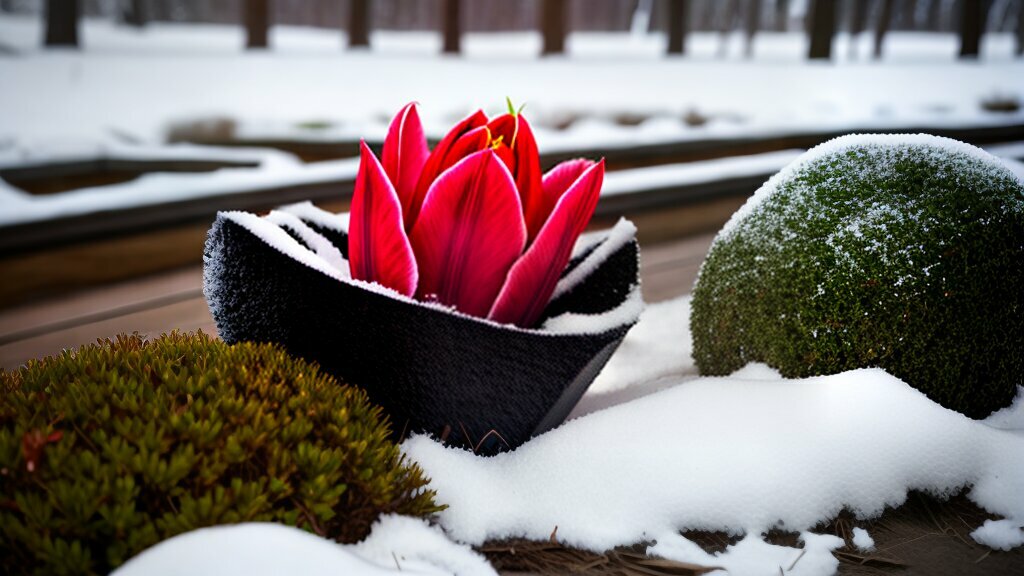
Preparing Potted Tulips for Spring
As winter begins to wind down and spring approaches, it’s time to start preparing your potted tulips for the transition outdoors. Here are some key steps to follow:
| Step | Description |
|---|---|
| Gradually acclimate the plants | Before moving your potted tulips outside, it’s important to gradually acclimate them to outdoor conditions. Start by placing them in a sheltered area for a few hours a day, gradually increasing the time and exposure to direct sunlight over the course of a week or two. |
| Prune back dead foliage | If any foliage on your tulips has died back, trim it away using sharp scissors or pruners. This will help stimulate new growth and promote overall plant health. |
| Provide adequate sunlight | Tulips need plenty of sunlight to thrive, so make sure to place your potted tulips in a sunny area of your garden or patio. Aim for at least six hours of direct sunlight per day. |
By following these simple steps, you can ensure that your potted tulips will continue to thrive and provide a beautiful burst of color in your outdoor space. And don’t forget to enjoy the fruits of your labor – take some time to sit back and appreciate the beauty of your blooming tulips!

Selecting Tulip Bulbs and Varieties
Choosing the right tulip bulbs is essential for a successful potting experience over winter. When selecting tulip bulbs, it is important to consider their size, bloom time, and color options.
Most garden centers and nurseries offer a wide selection of tulip bulbs in the fall, which is the best time to purchase them. Look for bulbs that are firm and free from mold or soft spots. Choose bulbs that are large, as they will produce larger blooms, and select early, mid, and late-blooming varieties to extend your flowering season.
There are also many different colors and shades of tulips to choose from, including solid colors like red, yellow, and pink, as well as two-toned and multi-colored varieties. Consider selecting a variety of colors and patterns to add visual interest to your pots.
Some popular tulip varieties for container gardening in winter include:
| Tulip Variety | Description |
|---|---|
| Princess Irene | Orange with purple flames |
| Angelique | Pale pink and white |
| Spring Green | Pure white with green flames |
| Rembrandt Mix | Two-toned blooms in a variety of colors |
Tip: Consider purchasing a few extra bulbs than needed, as not all bulbs will successfully bloom.
Conclusion
Planting tulips in pots over winter can be a fun and rewarding activity. Not only do you get to enjoy the beauty of these flowers during the dreary winter months, but you also get to witness the excitement of their blooming in the spring.
Remember to choose the right pots and soil, select the appropriate tulip bulbs, and provide proper care and maintenance throughout the winter months. Protecting the potted tulips from frost and cold temperatures, monitoring for issues, and preparing them for spring are all important steps in ensuring successful blooms.
By following the steps outlined in this guide, you can create a beautiful and enticing display of tulips that will bring joy and color to any indoor or outdoor space.
FAQ
Q: Can I plant tulips in pots over winter?
A: Yes, you can plant tulips in pots over winter.
Q: How do I choose the right pots and soil for planting tulips in pots in winter?
A: When choosing pots for planting tulips over winter, consider factors like pot size, drainage, and soil composition. Use well-draining pots and a high-quality potting soil.
Q: What are the best tulip bulbs for planting in containers for winter?
A: The best tulip bulbs for planting in pots over winter are ones that are suitable for container gardening and have a variety of bloom times and colors.
Q: How do I plant and care for tulip bulbs in pots over winter?
A: Follow these steps for planting and caring for tulip bulbs in pots over winter: plant bulbs at the appropriate depth, space them properly, and provide proper care during the winter months.
Q: How do I protect potted tulips from frost and cold during winter?
A: Protect potted tulips from frost and cold temperatures by insulating the pots, mulching the soil, and providing shelter when necessary.
Q: How should I water and fertilize potted tulips in winter?
A: Water potted tulips sparingly in winter to prevent waterlogging, and use a slow-release fertilizer to provide necessary nutrients.
Q: How do I monitor and troubleshoot potted tulips during winter?
A: Monitor potted tulips for pest infestations, disease symptoms, and nutrient deficiencies. Take appropriate measures to control pests, prevent diseases, and provide necessary nutrients.
Q: How do I prepare potted tulips for spring?
A: Prepare potted tulips for spring by gradually acclimating them to outdoor conditions and ensuring they receive adequate sunlight.
Q: How can I enjoy the blooms of potted tulips in spring?
A: Celebrate the arrival of spring and the blooming of potted tulips by enjoying their beauty and fragrance in your space.
 Little Garden Tips
Little Garden Tips






